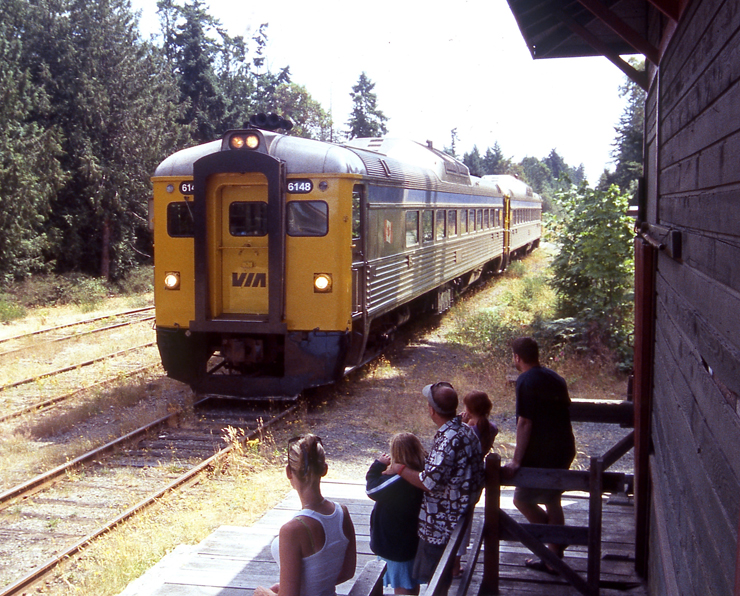
More Wednesday morning rail news:
— It would take more than $700 million to restore the former Esquimalt & Nanaimo Railway line on Vancouver Island, British Columbia, to operating condition suitable for a proposed commuter rail service, and another $600 million to launch such a service, according to a government report issued Tuesday. The Vancouver Island Free Daily reports that the government study outlined a three-phase process for restoring the route. The first, to make the line suitable for two to four passenger trains and two to four freight trains per day, would cost $326 million; the second, allowing four to eight passenger trains and four freight trains daily, would raise the cost to $552 million; and the third, to improve the right-of-way to optimal levels for commuter service, would bring the total cost to $729 million. The actual cost of implementing commuter service to Victoria, B.C., would be another $595 million. [See “Mayors urge funding to restore Vancouver Island rail service,” Trains News Wire, Feb. 8, 2019.]
— Canadian National has paid $1.25 million to settle damages caused by a 2016 wildfire in northeastern Minnesota, the Associated Press reports. The Skibo Fire in St. Louis County burned nearly 1,000 acres, including 387 acres in Superior National Forest. Federal prosecutors alleged the May 2016 fire was ignited by a locomotive with a mechanical failure. CN and subsidiary Wisconsin Central paid the $1.25 million to the U.S. Forest Service, helping offset more than $1.5 million to fight the fire. The settlement came before the government had filed suit and there was no determination of liability.
Sound Transit will rein in expansion plans in light of the financial realities brought on by the coronavirus pandemic, and won’t advance any more projects to final design or construction until it overhauls its capital plan. The Puget Sound Business Journal, in a paywalled article, reports the transit agency will reassess its plans with the understanding that tax revenue, a major part of its funding, is likely to decrease dramatically because of the economic downturn brought on by the COVID-19 virus.






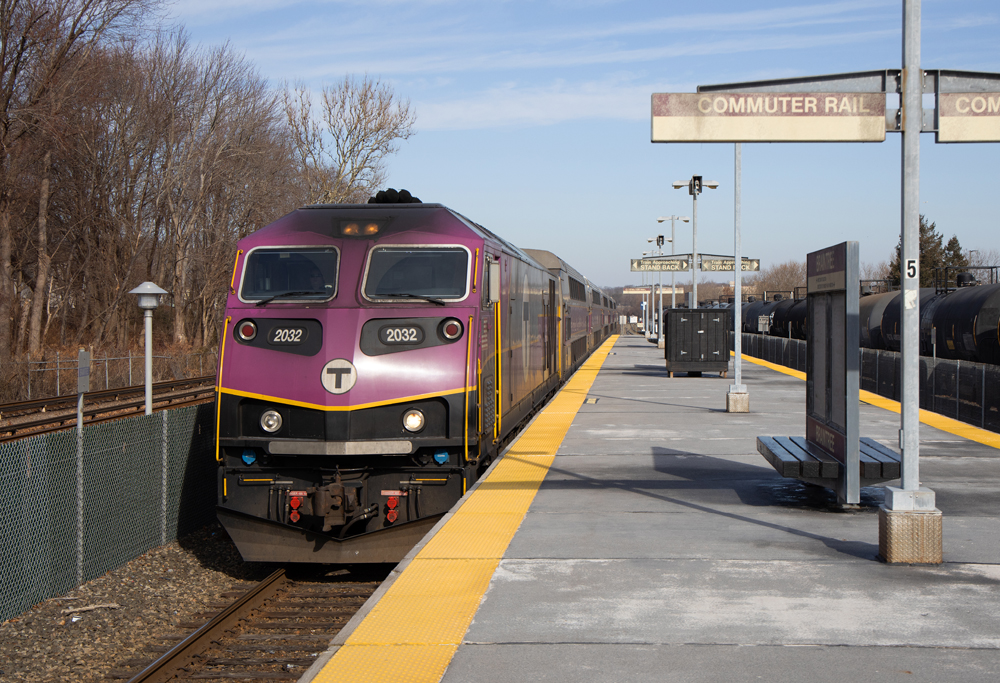
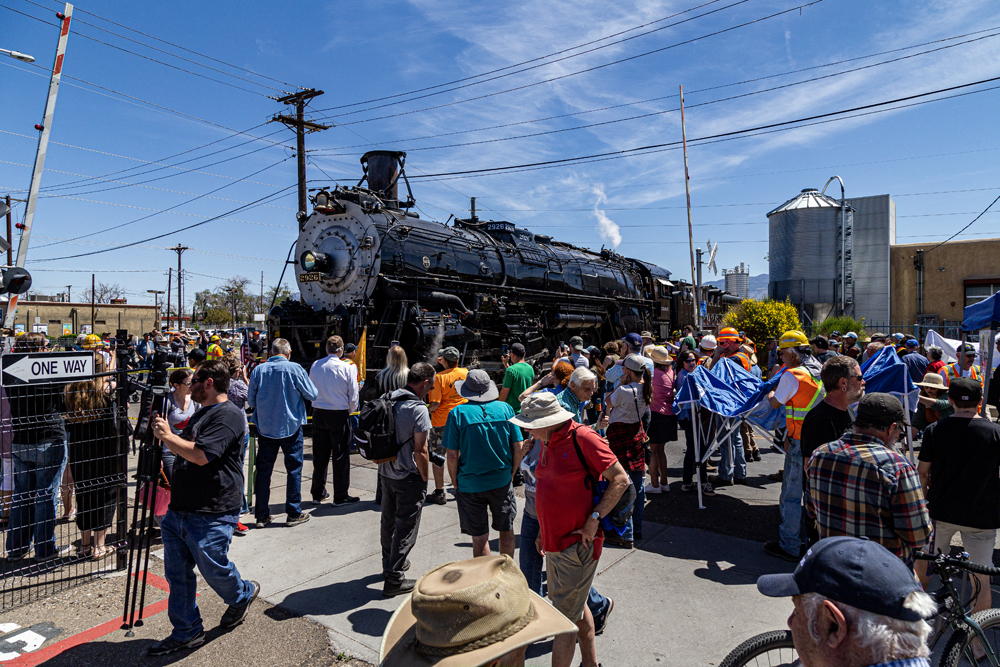
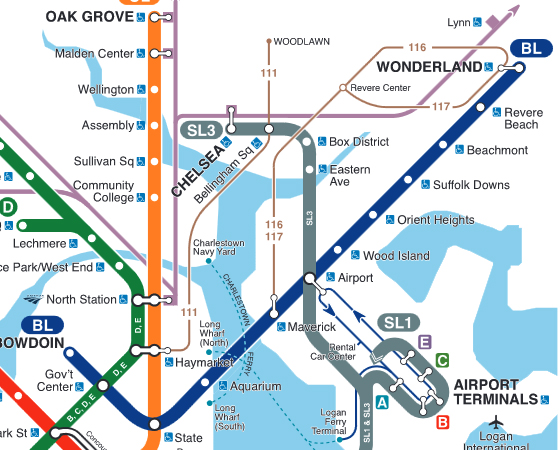
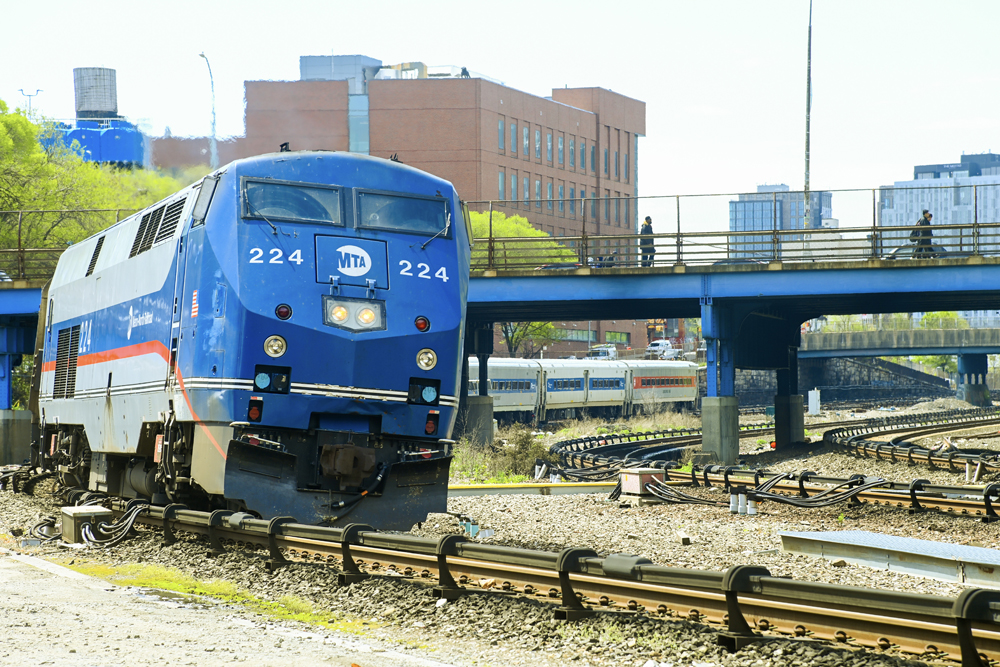




If you would like to live there, Mr. Landey, you are welcome to do so. I wouldn’t live there. This is the city that removed a statue of Sir John A,. Macdonald, Canada’s first prime minister, from public view because some native Indians didn’t like it. If Macdonald hadn’t lived, Victoria would be part of the USA and I’m sure it wouldn’t be called Victoria. In any event, the idea of commuter rail there is ridiculous. The population is small and spread out, everyone has a car (or two) and the weather is conducive to year-round driving.
Charles, I’m going to date myself but a slide rule was all we were allowed in college when I went. Why, because it was thought to be unfair to other students to allow some students to use calculators while they could not afford them. I had a TI SR-52 at the time. At the time of introduction to the public, ( mine was a pre-release one that went to dad at the power company ) they cost $395 with all the goodies except the printer. For that money, you could get a full year at the US’s largest Junior College. When I went to work full time, that was about equal to 12 hours at minimum wages. Today, what smart or flip phone doesn’t have a basic calculator built in? And even elementary school students have them. As for the rail reuse, it was said that when Miami’s MetroRail was put in they could have provided every user a limo and driver for 10 years for the money it cost. But then you would have had traffic that takes two hours to get to downtown Miami during rush hour. Vancouver Island may end up facing something along those same lines.
DENNIS – My mistake was in the decimal place. (Three orders of magnitude.) Slide rules don’t help.
My older brother went to M.I.T. (nuclear physics) starting 1960 with a slide rule long enough to reach from his belt to his knees. By the time I got to E-School four years later I knew slide rules were useless. I knew that because he gave me his! He didn’t need it!
Charles, as one retired engineer to another, not to worry as things happen…lol! That’s why I still keep my sliderule around…can’t trust them newfangled calculators!
IAN – Thanks for the levity. I’ll take 100% of the blame. Not senile, not half asleep. Just plain stupid.
Mr Landry blame the math on the money. The Looney money. ??
Rode the E&N a few times and have also driven highway 1. Highway 1 is so congested something needs to be done. When you see the amounts of money being spent on short LRT lines, this might not be too bad of an expenditure. I’m sure doing work on highway one to reduce congestion would be at least as costly as reopening the old E & N. I highly doubt freight traffic will ever return but getting autos off the road at rush hour would be a good thing. As mentioned previously, the cruise industry could also capitalize on this service, especially for trips up to Nanimo.
Such a lovely piece of Canada, well worth visiting if you ever have a chance.
That cost for rail restoration on Vancouver Island came from a non-competitive single source–a government study. What could possibly go wrong with that?
Nobody knows or will ever know what could be achieved in the real world and at what cost until the whole question is put out to bid for competitive proposals from competing bidders. It won’t be cheap, but it won’t be $700 million either.
You can forget the freight business increasing. The last chance for that was a few years ago when there was talk of a new coal mine near Comox. The coal would then be taken by rail to tide water at Port Alberni. Nothing ever happened with that plan.
The only other possibility is an increase in forestry. But Vancouver Island is probably the most Green spot in Canada and cutting down more trees just won’t happen there.
And Mr Landey – you’re right. Victoria is one of the best places to live. Unfortunately not if you’re a railfan.
DENNIS – A little off? Way off I’d say. I’ll have to hand in my engineering degree and return my pension from all those years working as a professional. Can’t claim it was asleep because it was about 8:30 AM. Sorry!
For 350,000 people, give each one $1 million, tell them sorry, no rail, and save the other $350 million. I have a feeling most will not complain.
Charles, your math is a little off. I agree with the 780 million number, but 780,000,000 divided by 375,000 is a little over 2000 per resident, not 2,000,000.
The Metro Victoria area population is about 350,000, enough to produce traffic congestion but is it enough to support commuter trains? If I read the article correctly the marginal cost of passenger above freight is about 780 million loonies, or about 2 million loonies per metro area resident. Counting salaries and benefits of say 100,000 loonies per year for a decently paid worker that’s twenty years of compensation. For just the capital cost before the first wheel turns and costs tax money for the operating subsidy.
That’s per all the residents. Overaged over those who will actually ride the trains it’s far more than he or she will earn in a lifetime.
From all I’ve heard Victoria is one of the best places to live on this earth. Commuter rail transit will mean an even better quality of life but the cost simply has to come down.
Perhaps BC could sell the railroad to CN, like they did with BC Rail. CN seems to have a way to make down-on-their-luck rail lines go away.
Mr. Falls, $350 million divided into 350,000 people is $1,000 each.
A government study, eh? Reminds me of an old Frank & Ernest comic strip. An announcer on the TV says “A five-year government study released today reveals you can make darned good money from a five-year government study”.